Herbal teas are much healthier than traditional ones. They do not contain caffeine or its analogues but offer a range of beneficial properties. Doctors and nutritionists recommend including them in your daily diet. One of the tastiest and most aromatic options is raspberry leaf tea.
While freshly brewed raspberry leaves have a rich aroma in summer, their flavor is less pronounced in winter. To achieve a darker color and stronger taste, they are fermented. This is a complex and labor-intensive process, but it enhances the health benefits of the dried leaves and makes them comparable in gastronomic quality to regular tea.
Table of contents
Why Ferment Raspberry Leaves
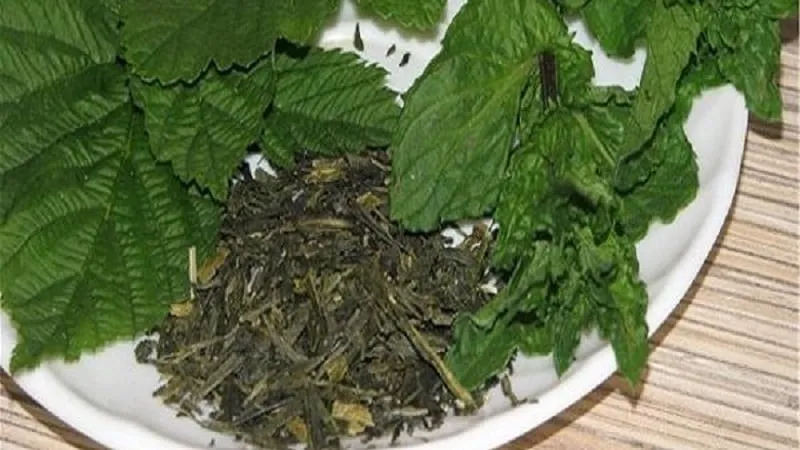
Fermentation is the breakdown of organic substances under the influence of enzymes. This process converts insoluble compounds in the leaf tissues into soluble and easily absorbed ones. Fermentation is driven by bacteria present both on the leaves themselves and in the air.
Fermented raspberry leaf tea is more aromatic than simply dried leaves. It also has a rich brown color and a unique taste.
This is the same method used to produce traditional black tea. Fermentation is what gives it its dark color and robust flavor (in contrast, green tea is not fermented).
Interesting fact! Fermentation isn’t limited to raspberry leaves. The leaves of other fruit and berry plants, as well as fireweed (Ivan tea), can also be fermented.
Benefits and Risks of Fermented Raspberry Leaf Tea
Fermenting raspberry leaves not only enhances their aroma and taste but also boosts their health benefits. This tea is recommended not just as a substitute for traditional hot beverages but also as a remedy for colds and an immune-boosting drink.
Raspberry leaves have several beneficial properties:
- Anti-inflammatory. The effects of raspberry leaves are comparable to paracetamol, but they are gentler on the body.
- Expectorant. The tea helps thin mucus and expel it from the bronchi.
- Hemostatic. It helps stop both external and internal bleeding.
- Detoxifying. It aids in removing toxins, heavy metals, and waste from the body.
- Diaphoretic. Raspberry tea increases sweating, which helps reduce fever.
- Immune-boosting. Fermented tea activates immune responses, helping the body fight colds.
- General strengthening. It tones the body and improves overall well-being, restoring vitamin and mineral balance.
- Astringent. The tea can help with diarrhea.
Fermented raspberry leaf tea may cause harm if consumed under certain conditions:
- Constipation;
- Allergic reaction to raspberries;
- Gout.
Important! Raspberry tea is not a primary treatment — it is only a supplementary remedy to main therapy. Always consult a healthcare professional before using it for medicinal purposes.
Harvesting and Preparing the Leaves
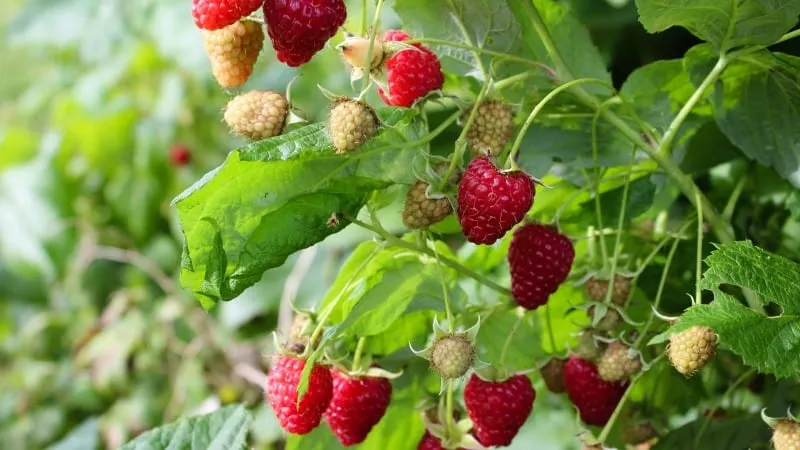
Before fermenting raspberry leaves at home, they must be harvested and prepared. This stage involves several rules and nuances.
Raspberry leaves can be collected from spring to autumn. However, spring leaves are more tender and nutrient-rich, while autumn leaves are tougher, requiring longer fermentation, but they have a more intense aroma.
Note! Harvesting too many leaves before fruiting can slow down berry formation. In spring, no more than two shoots should be taken from each bush.
When selecting leaves, pay attention to the following:
- Harvesting location. Avoid bushes near roads or industrial areas, as they may contain heavy metals.
- No chemical treatments. Do not collect leaves after spraying with commercial insecticides or pesticides.
- Appearance. The leaves should be free of spots, mold, damage, cobwebs, or other signs of disease or pests.
- Shape. The leaf blades should have a uniform shape. Deformed leaves may indicate a viral infection.
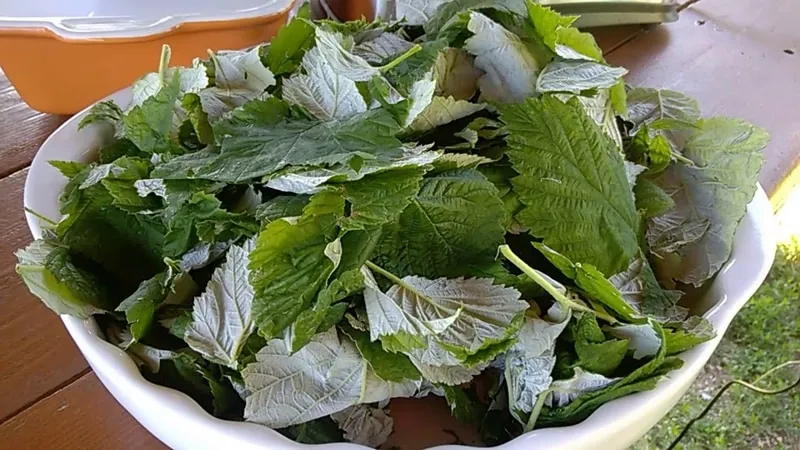
Do not wash the leaves, as this will interfere with the wilting process before fermentation. Simply shake off any debris.
If the leaves are harvested in autumn, remove tough veins and stems to facilitate fermentation.
Fermentation Stages
The fermentation process for raspberry leaves consists of several steps, including preparation and actual fermentation.
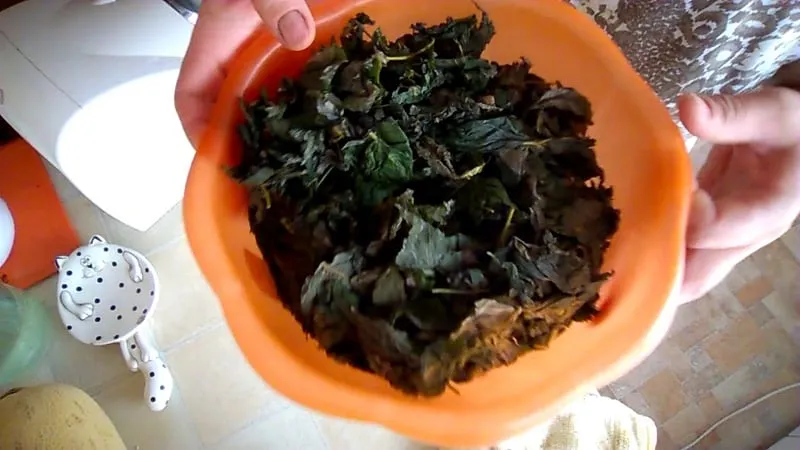
Wilting
Excess moisture in the leaves complicates further processing and reduces fermentation quality, leading to a musty-smelling tea. Thus, preparation begins with wilting.
During this stage, chlorophyll and other compounds responsible for the grassy smell break down. Meanwhile, essential oils accumulate, intensifying the raspberry aroma.
There are two methods for wilting leaves. Here’s the first:
- Spread the leaves on a cloth or tray in a 1-2 cm layer. Cover them with a single layer of gauze to protect from dust and insects.
- Place the trays in an area with a temperature of at least 24°C. Higher temperatures speed up the process. Humidity should not exceed 70%. Leaves can be dried outdoors in a shaded, wind-protected spot or indoors in a well-ventilated space.
- Let the leaves wilt for 6 hours, then flip them and leave for another 6 hours. Repeat if necessary.
This method takes 12-48 hours, depending on temperature and humidity.
The second method:
- Use a clean, dry, dense cloth (e.g., linen or a tablecloth).
- Spread the leaves in a single layer and roll the cloth tightly.
- After 6 hours, unroll and check the leaves. If not wilted enough, transfer to a fresh cloth and repeat.
To test if leaves are wilted, bend them. If there’s no crunch along the veins, they’re ready. When squeezed, they should stay crumpled.
Freezing
After wilting, freeze the leaves to break down cell membranes and release juices.
Place the wilted leaves in a bag and freeze for 24-48 hours (or up to a month).
This step ensures faster, more efficient fermentation. The longer they freeze, the easier they are to work with.
Note! Freezing is optional but simplifies the fermentation process.
Breaking Down the Leaf Structure
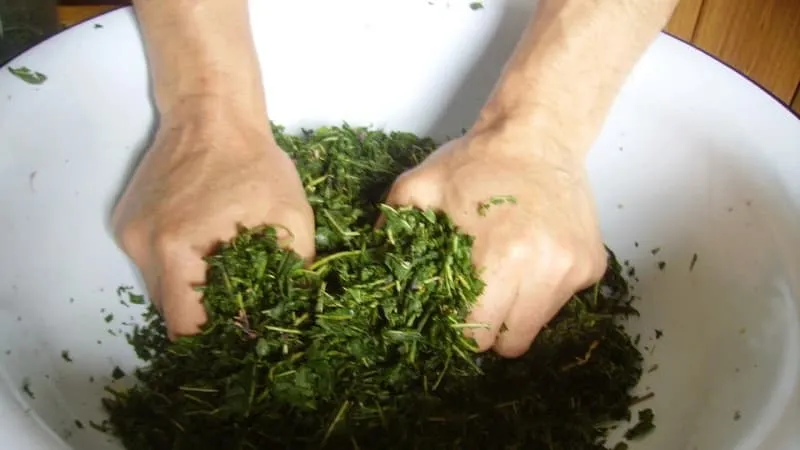
The juice contains enzymes crucial for fermentation. Freezing alone doesn’t release enough juice, so the leaves must be further processed.
Methods for breaking down the structure:
- Rolling. Stack 5 leaves, twist them tightly, and roll between your palms until darkened with juice. The roll should hold its shape.
- Kneading. Massage leaves in a bowl like dough until darkened. Optionally, roll each into a tube.
- Grinding. Pass leaves through a meat grinder for granulated tea.
The first two methods are preferred for best results.
Fermentation Process
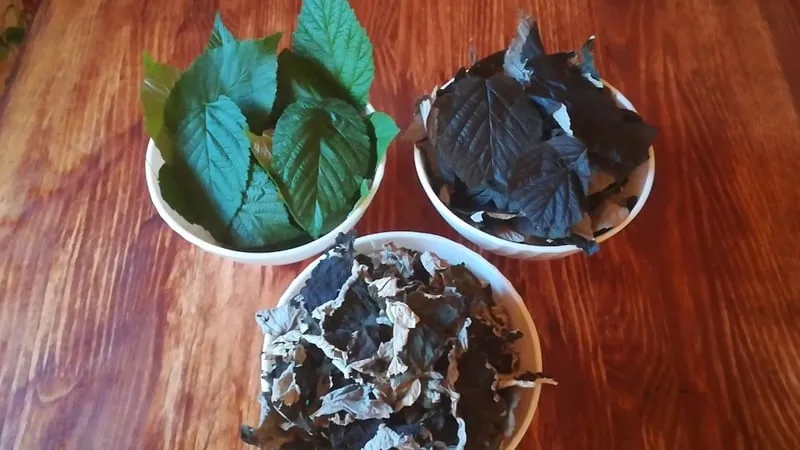
Once juice surfaces, fermentation begins. It involves multiple stages, each requiring specific enzymes. Disrupting this sequence affects tea quality.
Maintain an optimal temperature of 22-26°C. Below 15°C, fermentation stops; above 30°C, desirable compounds become insoluble.
Fermentation steps:
- Layer leaves (7-10 cm thick) in a plastic or enamel container. Press down firmly.
- Place a plate and a weight on top. Cover with a damp cloth or gauze. Leave the lid slightly ajar for airflow.
- Check the cloth periodically; rewet if dry.
Fermentation takes 6-10 hours. The aroma peaks when ready. Over-fermentation weakens the scent.
Drying Methods for Fermented Tea
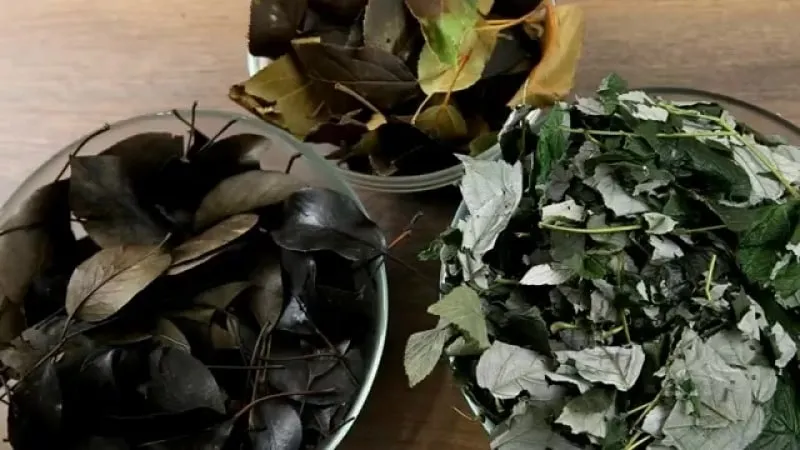
Prepare fermented leaves based on the breakdown method used:
- Rolled leaves: Slice into small pieces (optional if single leaves were rolled).
- Kneaded whole leaves: Dry as-is; optionally crumble afterward.
- Ground leaves: Loosen before drying.
Popular drying methods:
- Oven. Spread leaves on parchment-lined tray. Dry at 100°C for 1 hour, then reduce to 50-60°C until fully dry. Stir every 20 minutes. Use convection mode if available.
- Air fryer. Place leaves in a preheated air fryer (150°C) for 10 minutes. Stir, then dry at 85°C for 20 minutes. Keep the lid slightly open.
- Pan. Toast small batches on medium heat for 10 minutes, then low heat for 20 minutes, stirring constantly.
Tea is ready when most leaves snap rather than bend.
Final air-drying: Place in a cloth bag and hang in sunlight for 1-7 days.
Fully dried tea should have a muted aroma and make a rustling sound. Granulated tea should break, not crumble, when pressed.
Storing Fermented Tea
Wait at least a month before tasting. Earlier sampling yields a weaker flavor.
Store in glass jars, fabric bags, or metal containers, away from moisture and sunlight.
Brewing Fermented Raspberry Leaf Tea
Use as a regular tea substitute—either alone or blended.
The simplest method: Steep 2 tsp of leaves in 200 ml warm water for 15 minutes.
Alternatively, brew 2-3 tbsp in a teapot with boiling water. Steep for 20 minutes and use as a concentrate.
Conclusion
Making fermented raspberry leaf tea is straightforward. The process involves several stages, each enhancing flavor and benefits. Even beginners can succeed by following these steps.
Fermented herbal teas are not only delicious but also packed with health-boosting compounds, making them a valuable addition to your diet.







